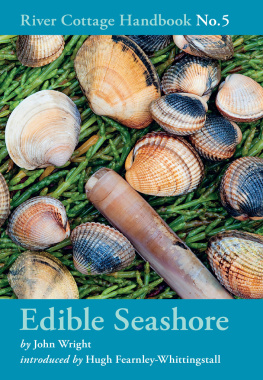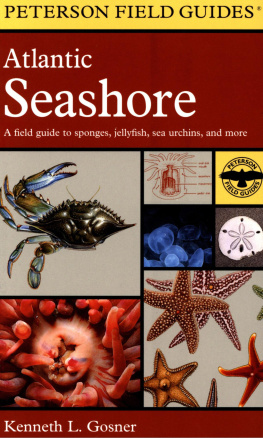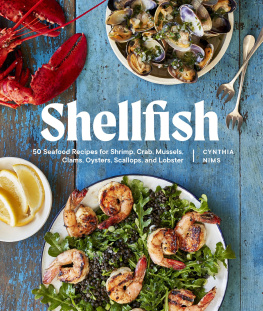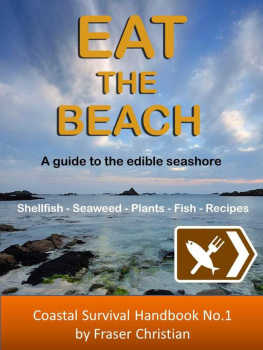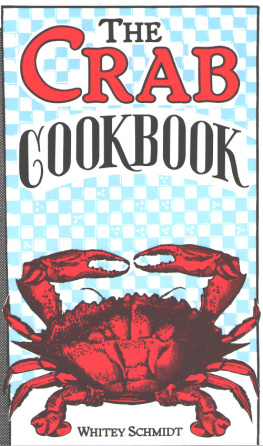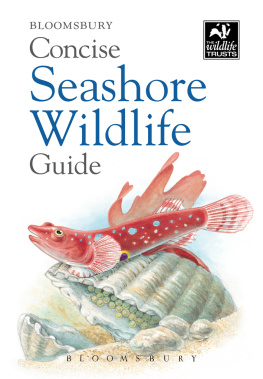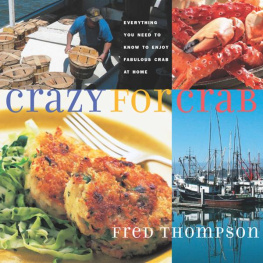
For Trish
Bloomsbury Publishing
An imprint of Bloomsbury Publishing Plc
50 Bedford Square
London
WC1B 3DP
UK
1385 Broadway
New York
NY 10018
USA
www.bloomsbury.com
This electronic edition published in 2018 by Bloomsbury Publishing Plc
Bloomsbury is a registered trademark of Bloomsbury Publishing Plc
First published in Great Britain 2009
Text 2009 by John Wright
Photography 2009 by John Wright
Recipe photographs 2009 by Colin Campbell, except
2009 by John Wright
John Wright has asserted his right under the Copyright, Designs and Patents Act, 1988, to be identified as Author of this work.
All rights reserved
You may not copy, distribute, transmit, reproduce or otherwise make available this publication (or any part of it) in any form, or by any means (including without limitation electronic, digital, optical, mechanical, photocopying, printing, recording or otherwise), without the prior written permission of the publisher. Any person who does any unauthorised act in relation to this publication may be liable to criminal prosecution and civil claims for damages.
For legal purposes the acknowledgements and photography credits constitute an extension of this copyright page.
British Library Cataloguing-in-Publication Data
A CIP catalogue record for this book is available from the British Library
Library of Congress Cataloguing-in-Publication data has been applied for.
ISBN: 978-0-7475-9531-1 (HB)
ISBN: 978-1-4088-9629-7 (eBook)
Project editor: Janet Illsley
Designer: willwebb.co.uk
www.bloomsbury.com/rivercottage
While every effort has been made to ensure the accuracy of the information contained in this book, in no circumstances can the publisher or the author accept any legal responsibility or liability for any loss or damage (including damage to property and/or personal injury) arising from any error in or omission from the information contained in this book, or from the failure of the reader to properly and accurately follow any instructions contained in the book. The recipes supplied in the book are for personal use only. No recipe may be used for commercial purposes without the express permission of the author.
To find out more about our authors and their books please visit www.bloomsbury.com where you will find extracts, author interviews and details of forthcoming events, and to be the first to hear about latest releases and special offers, sign up for our newsletter.
Contents
Who can resist the great primal, elemental pull of the sea? Even if youre no sailor, its a near certainty that you have been drawn to the seas edge at some point in your youth, to stand on the brink of the vast ocean, and dabble on the margins of our known universe: our shores.
Childhood memories of building sandcastles, rummaging in rock pools and splashing in the surf stay with us like little else. Whether netting plump prawns in a weedy rock pool, or plucking weed itself, silky and wet, from the fringes of a reef, or hauling in a crab pot with hope in my heart, these salt-scented, windswept, sand-encrusted endeavours have imprinted themselves on my mind with particular clarity. For me, those precious moments have been equally nourishing in adulthood. And just as they are always a pleasure to recall, they are also a pleasure to repeat, as often as time allows.
This is a phenomenon that John Wright, the author of this brilliant little book, understands well. The Edible Seashore foraging days that he leads at River Cottage are among the most popular of all our events and he puts this down to the fact that they allow people to escape into that wonderful, truly wild, yet accessible world where the sea meets the land. Its the ultimate antidote to the daily grind.
Take a group of adults out of their work environment, give them some buckets and nets and let them go paddling among the rock pools, and they invariably have a whale of a time. Foraging allows you to leave behind your humdrum concerns and routines and inhabit a world full of fresh air, foaming spray and genuinely exciting discoveries. The fact that so many of them are edible delicious even is the great and under-appreciated bonus.
There is no better companion on such a jaunt than John. This is not his first River Cottage book. If you own a copy of his volume on mushrooms, you will know that he is not only a great expert on mycology, but one of the most engaging and amusing writers on the subject. Within this new book you will discover what you may already have suspected that the breadth of Johns knowledge and the width of his wit and wisdom go way beyond our fungal heritage. He is just as much at home with estuarine mud, golden sand, or salty water between his toes as he is with the bosky forest floor beneath his boots.
The fact is that Johns knowledge of wild foods across the board is greater than that of anyone else I know. But, as with mushrooms, the delight of this book is not only the erudite precision with which he selects from his vast store of knowledge, but also in the sheer joy, the sense of wonder and fun, with which he puts it across. You know that few people will get quite as much pleasure from stumbling on, say, a good thick cliff -top run of Alexanders as John. But when he describes its taste, its surprising role in our history, and a nifty way for you to prepare and taste it at home, then all that fun and excitement is yours for the taking.
Th e result is that even the armchair forager can take much pleasure from this book. Im convinced, though, that it will inevitably lure most of you, sooner rather than later, down to the coast. If you are even remotely interested in our culinary heritage, then you must. As he reveals in the pages that follow, there is a wealth of delicious food to be found on the strands, reefs, mud flats, cliff tops and marshes of Britains glorious and varied coastline. Shellfish and crustaceans, leafy greens, herbs, flowers and seaweeds are waiting to be discovered.
Gathering wild foods is one of the most satisfying and energising projects a person can undertake and doing so by the seaside rain-whipped, salt-scoured, sun-baked or otherwise is foraging at its most carefree and joyous. Nevertheless, it would be disingenuous to suggest that foraging is always straightforward and easy. You need to have more than an inkling of where to go, what to look for, what to avoid, and what to do with the wild foods you find. And with all that in mind, John has risen admirably to the task of producing a truly practical guide.
This handbook is meant to find its way into pockets and rucksacks. Taking this book with you is about as close as you can get to actually having John walking alongside as you comb your chosen beach. These pages are packed with indispensable advice and information, from clear photographs of the hole a razor clam forms in the sand, to instructions on how to create your own first-rate shrimp net. John even makes a good fist of unravelling the unremittingly complex laws and lore that relate to walking along, and taking things from, our seashores.
River Cottage HQ is situated on the Devon-Dorset border and down here we have access to some of the most beautiful, clean and richly populated shores in the country. We are particularly lucky, Ill grant you, but I cant emphasise enough that seaside foraging is a pleasure thats open to all of us. We are blessed throughout the UK with a stunning and varied coastline, which is largely well looked after and usually accessible to walkers, bathers and foragers. Even if you dont live very close to the sea, nowhere in the land is more than about 70 miles distant from it. If youre feeling a little jaded or in need of some fresh inspiration, perhaps its time for a trip to the beach? You could be amazed at what you find and, as everyone knows, theres nothing like the sea air to give you an appetite...

